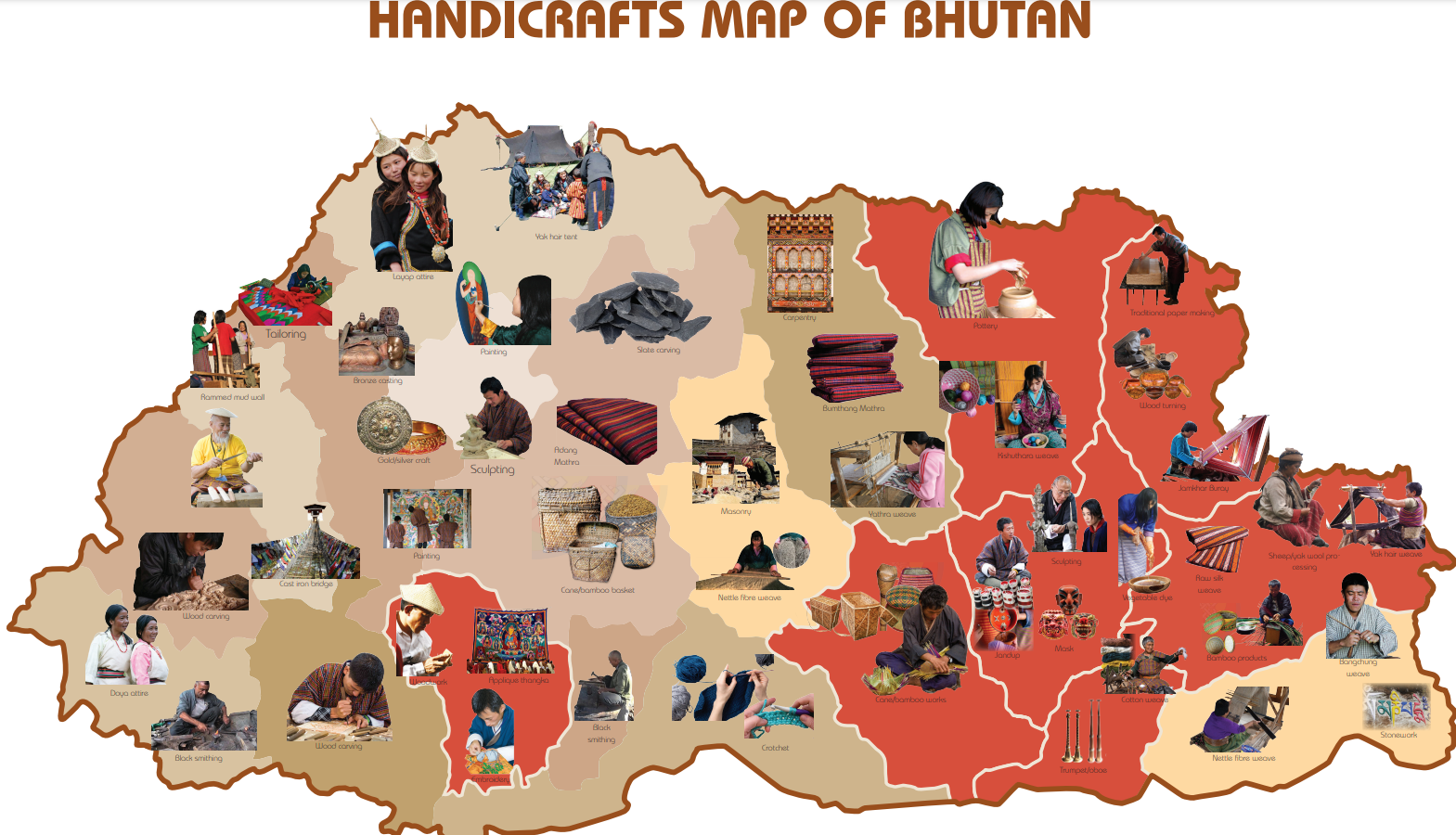
Bhutan has been known for its Gross National Happiness (GNH) concept - the all-embracing national growth approach, aiming at economic development, yet without compromising natural environment and undermining cultural heritage. Linked with the GNH concept, the Royal Government of Bhutan has adopted the guiding principle of “High value, Low volume Tourism”, targeting high revenue from mindful and responsible visitors through good value for money experiences. Up until the outbreak of the pandemic, the number of tourists visiting Bhutan was steadily increasing and the sector significantly contributed to national revenues and employment.
However, tourism infrastructure, products, services and return have been concentrated in western Bhutan. Thimphu, Paro and Punakha held more than 75% of the total visits, while the eastern and southern provinces altogether received less than 5% of the tourists in 2018 (Bhutan Tourism Monitor 2019). This imbalance has resulted in unfavourable situations for both areas: the tourism establishments and players in the west, heavily depend on the imported resources and goods to meet tourist arrivals and guest demands, whereas the cottage and small industries (CSIs) and producer groups in the east and the south are largely excluded from the tourism value chain. The latter are not aware of tourists’ demands, have limited access to technical knowledge and design skills, and face difficulties in finding marketing channels of their products. Poverty in rural areas remains almost 10 times higher compared to urban areas, and the livelihood of local communities is mostly dependent on subsistence farming.
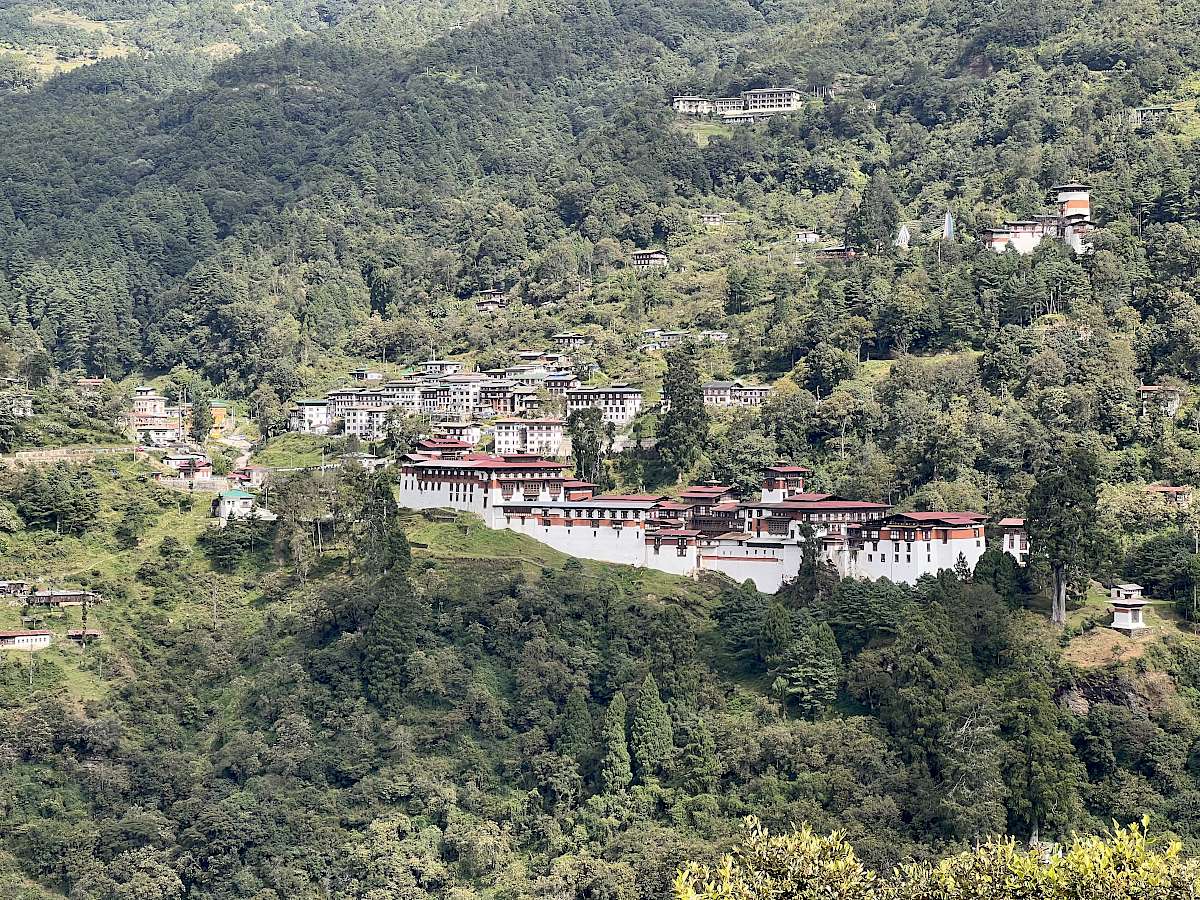
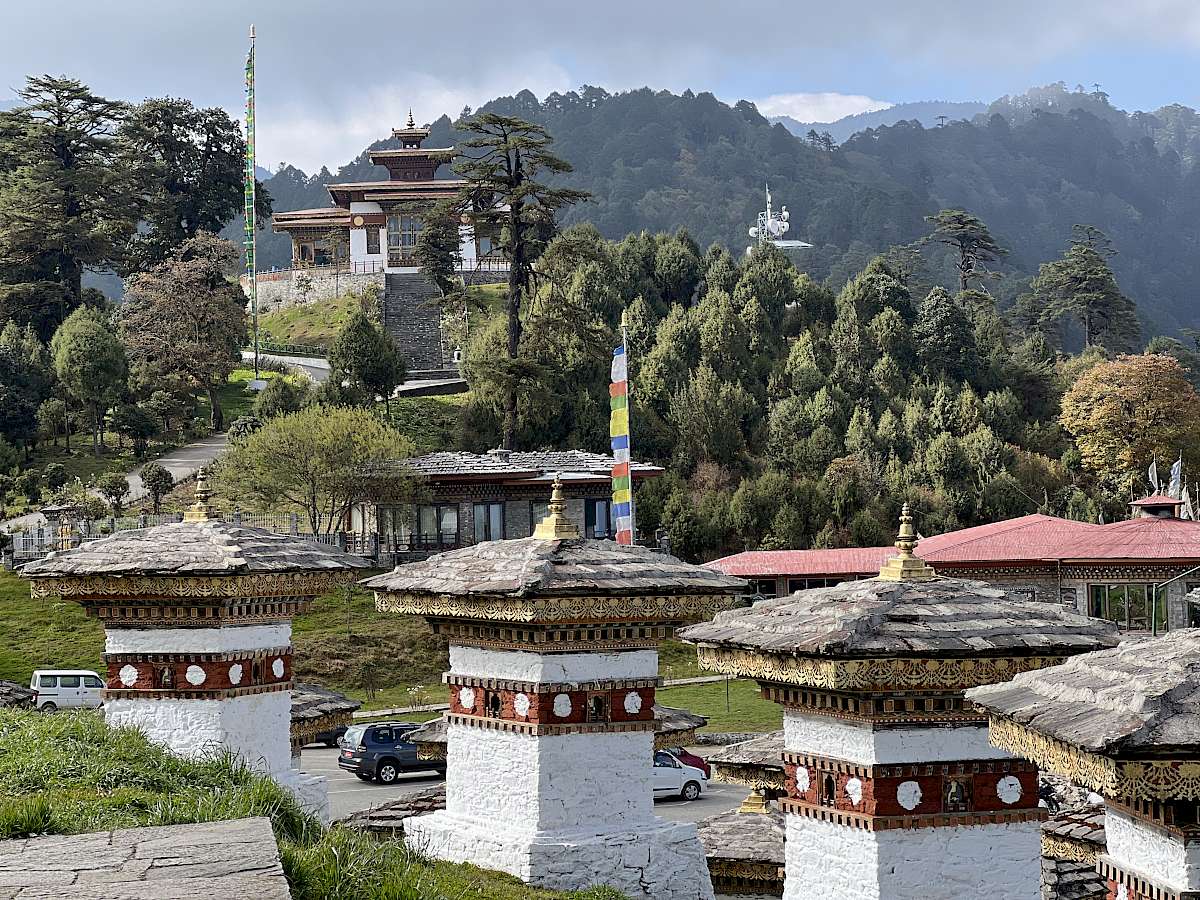
To contribute to a sustainable and more inclusive tourism development in Bhutan with an improved regional spread of the tourism activities and its value, the EU SWITCH-Asia SHINE Project (Sustainable Hospitality Industry Inclusive of Native Entrepreneurs) pursues its two-way strategy: 1) It brings tourists to where the agro- and handicraft production takes place; and 2) it brings the local products where the mainstream tourism takes place.
For the first track, SHINE promotes touristic attractions in the east and the south, packaged in a number of short-term (4 to 8 days) itineraries. Natural landscape, biodiversity, architecture, ethnic festivals, gourmet experience, craft skills and products, and edutainment activities are offered. Providers of products and services along the itineraries are being capacitated with technical knowledge and skills and supported with practical materials in order to co-create an inclusive tourism concept. For the latter, SHINE integrates informal sectors and small-scale producers in the tourism value chain, and strengthens their capacity to add value to their proposed experiences. This approach addresses and engages the raw material suppliers (farmers and non-wood forest product collectors), the processors (post-harvest processing units, handicraft CSIs), the tourism establishments (hotels, restaurants, tour operators and guides) and the tourists.
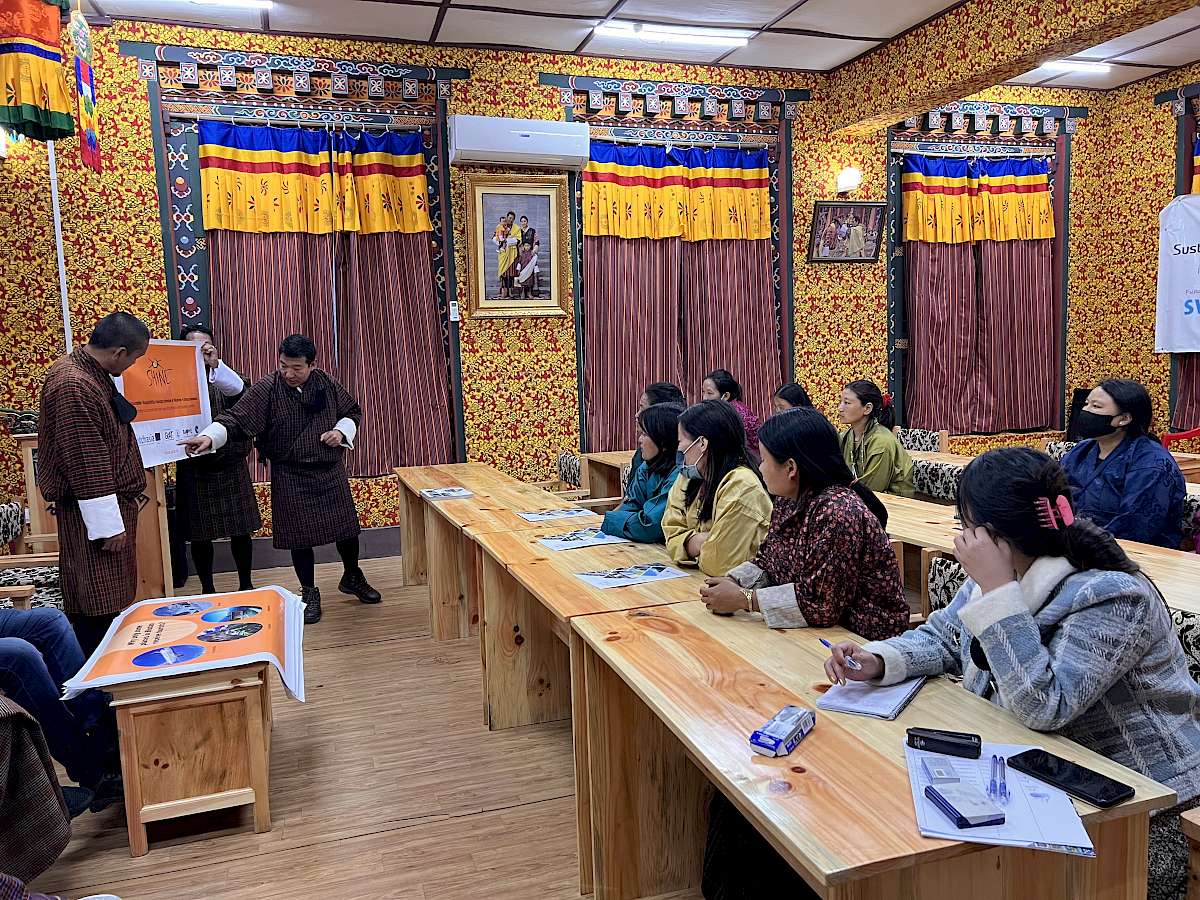
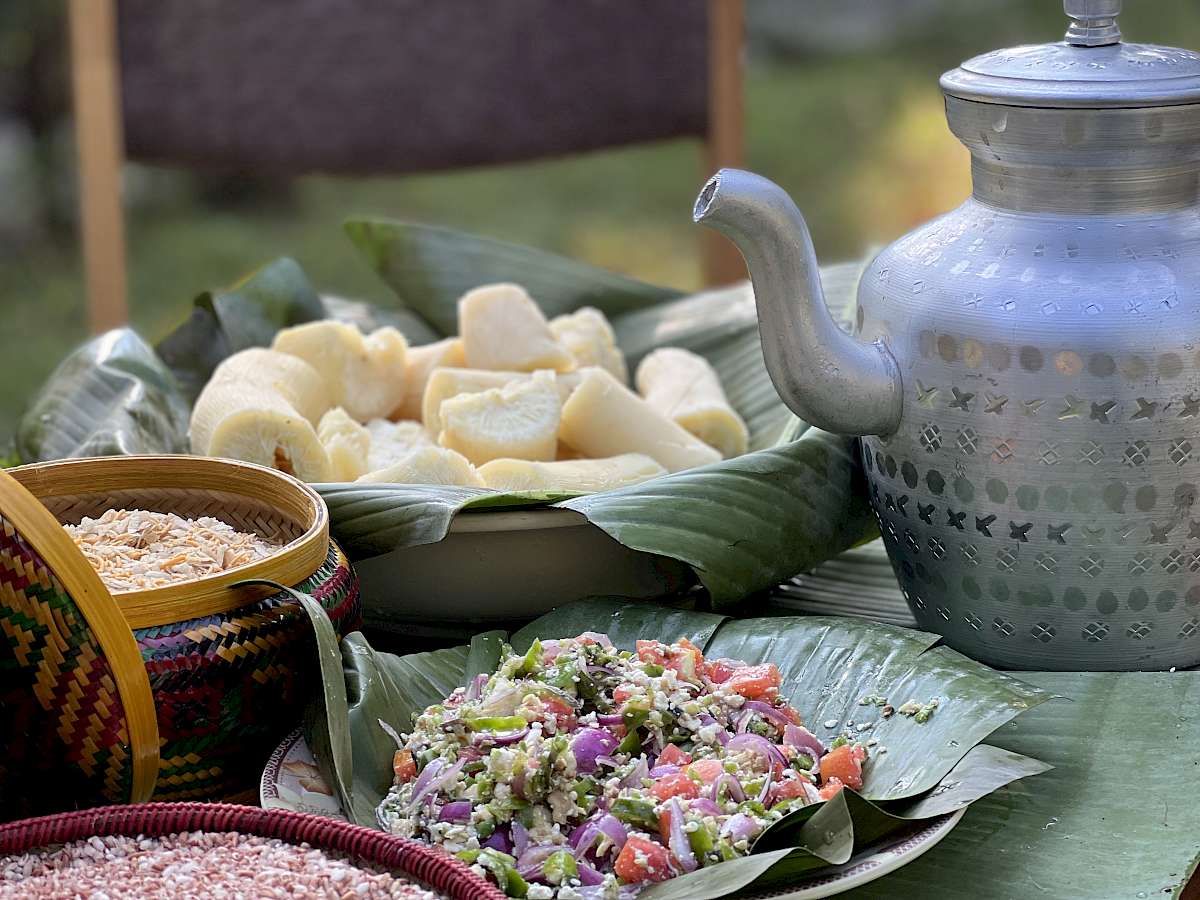
The SHINE Consortium also provides technical assistance for producers and service providers in order to achieve a higher quantity and better quality of products. Appropriate Technology solutions are proposed, and, new product development is encouraged for increased resilience of the producers and the creation of new income and employment opportunities. Best practices and model villages will be promoted to be replicated in other areas. SHINE advocates existing and forthcoming policy measures, such as national/regional tourism development plans, guidelines, rules and regulations for natural conservation and the certification schemes for village home stays (VHS).
Tourism Recovery and Building Forward Sustainably
SHINE has sustained its efforts during the repeated shutdowns and closures in Bhutan, and enabled stakeholders and beneficiaries to maintain the momentum towards the project’s aims and goals. The lull of tourism in the country has been taken as an opportunity to engage and prepare the under-developed tourism potentials in the target areas. GrAT (Center for Appropriate Technology) and two local implementing partners, HAB (Handicrafts Association of Bhutan) and BAOWE (Bhutan Association of Women Entrepreneurs) gathered attractive tourism resources in the seven target districts.
In February and April 2021, the SHINE team organised ‘participatory rural appraisal (PRA)’ workshops in selected ten Gewogs (groups of villages) in Zhemgang, Trashigang, Pemagatshel and Trashi Yangtse. The project set up remote hybrid conferences that brought international experts face to face with on-site participants, national and government partner agencies and rural communities in project sites. Through the direct interaction with more than 150 participants representing agri- and handicrafts producer groups, homestay providers and governmental/administrative units, their challenges in production, market linkages, capacitation and business operation were discussed. Findings were verified by the Governors, Economic Development Officer (EDO) and Gups (head of Gewog) of each district, and past and ongoing interventions of the Local Government to address those challenges were shared, in order to find synergies and opportunities for collaboration with the SHINE project. The inclusive tourism development strategy of SHINE and the EU SWITCH-Asia support is highly appreciated by the stakeholders and beneficiaries.
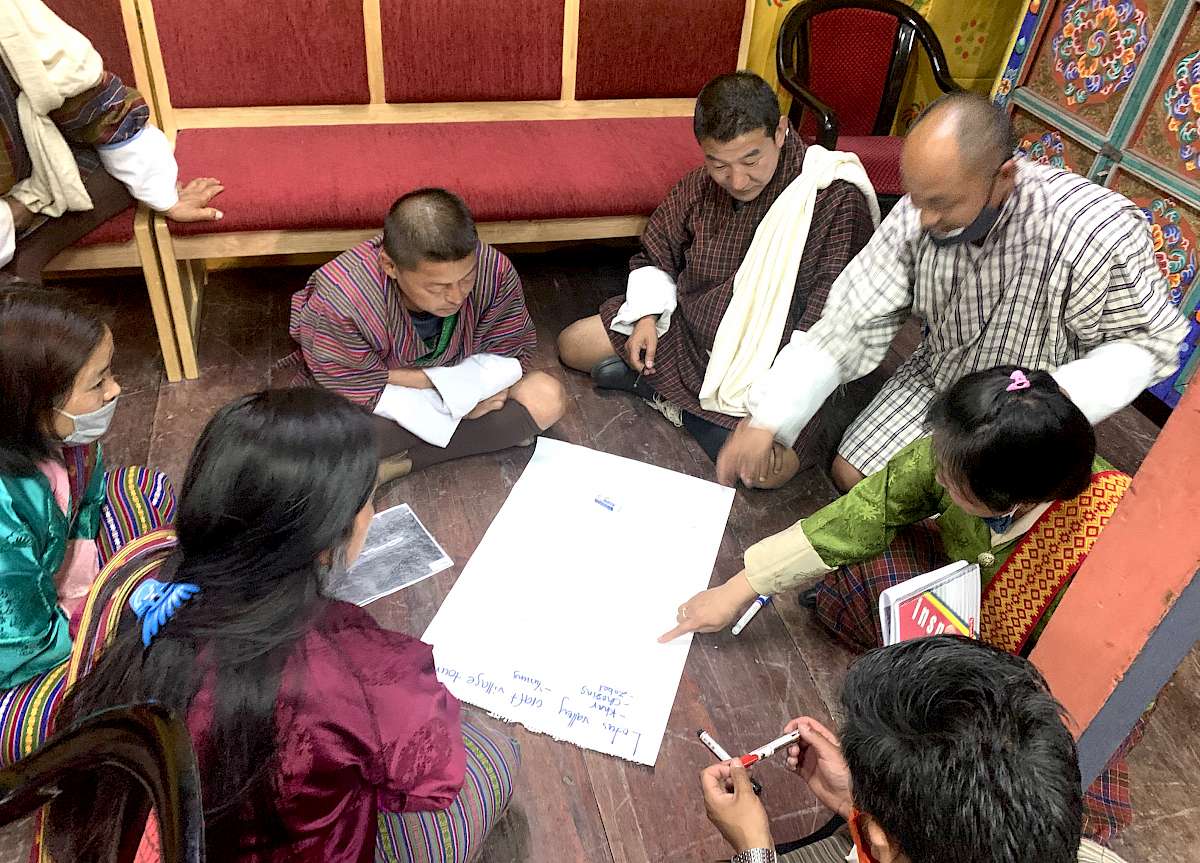
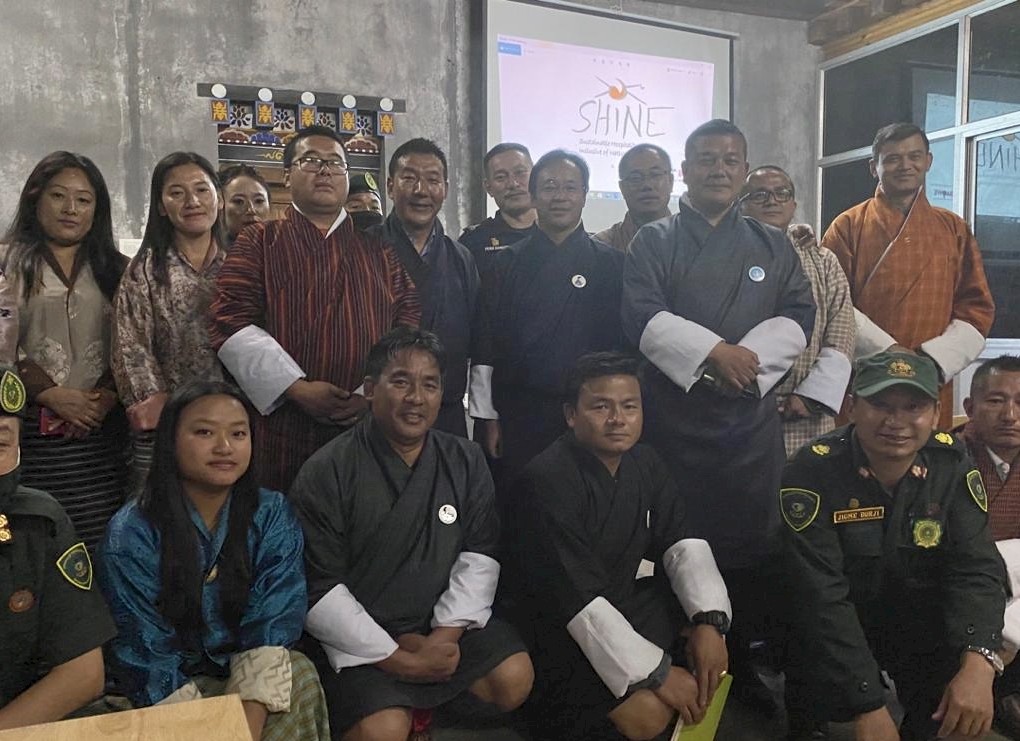
In response to the worsening economic situation of handicraft CSIs posed by COVID-19, the Royal Government of Bhutan has given a high priority to the handicraft sector in its Economic Contingency Plan 2020. In close cooperation with the Associate Partner, Tourism Council of Bhutan (TCB), HAB developed four lines of textile-based handicraft products and capacitated the CSIs for entrepreneurship. From 5th to 28th November 2020, 29 artisans from Zhemgang, Trashigang and Mongar districts participated in the programme and generated 42 handicraft products for tourists and the hotel industry. The new products and diversified design options are presented in a Handicrafts Catalogue.
From 24 to 31 October 2021, the SHINE team visited Zhemgang district in South East of Bhutan, and interacted with the producer groups of agriculture (fruits and vegetables), livestock (dairy), non-wood forest products (NWFP), handicrafts, and VHS. The team has gathered data on the present prevailing situation — including factors such as business-as-usual (BAU) production technologies, volume, quality, available products, market players—so that it can serve as a comparative baseline for an impact and efficacy comparison of the “before and after” stages of the project’s intervention. For specific technical challenges, the team is also setting a follow-up plan, such as VHS capacitation programme, improvement of turmeric powder production, and development of new dairy products.
On 28 October, the tourism attraction book was presented to Zhemgang Local Government Unit. The Governor and the Dzongkhag Planning Officer agreed that the SWITCH-Asia SHINE project and their Community-Based Tourism Action Plan (CBTAP) share the same direction, committing to more actively integrate producer groups and cooperatives in their programme so that they can benefit from SHINE Project interventions.
Dr. Robert Wimmer, Project Manager, and the local team also presented progress during a series of experimental production of fermented chili paste in the improvised lab facilities in Thimphu, as a showcases for new product development, diversification and marketing.
What’s ahead of us?
The project is preparing showcases of local culture, sustainable use of natural resources, food traditions, handicrafts as well as leisure and wellness services with the potential to benefit remote communities. A set of alternative destinations with diverse points of interest are presented in the form of the SHINE Tourism Attraction Book, including thematic interactive maps. The book will outline the attractive potentials that will meet the demands of international visitors for unique, culturally enriching and socially meaningful experiences. On the other hand, the local target community groups such as farmers, wild produce harvesters, artisans, tour operators and rural-based micro-small-medium enterprises (MSMEs), will use the tour package proposals as the backbone, to which they add value through their products and services.
SHINE is also developing a mobile app, where hotels, restaurants and tourists can access and purchase locally produced food products (e.g. fresh/dried vegetables and fruits, bottled pickles, seeds), non-food products (e.g. essential oil), handicrafts (e.g. furniture, textile, containers, utensil, decoration) and accommodations (e.g. VHS, eco-lodge, camp sites).
Acknowledging the importance of this project, Daniel Hachez, Minister Counsellor and Head of Cooperation Delegation of the European Union to India and Bhutan said, one of the key sectors for Bhutan’s growth is tourism and hospitality. It is the largest employer and second highest revenue contributor in the country. As we move towards economic recovery, tourism in Bhutan has an important role to play. It must take into account support to local economy through promotion of local food products, indigenous handicrafts, generating local employment, improved resource management and environmental impact. The EU-supported SWITCH-Asia SHINE project, contributes to that. It aims at supporting a low-carbon, resource-efficient economy, and hopes to generate income opportunities for the rural communities and MSMEs. I hope the story by the project, will be first of many more successes to come!
